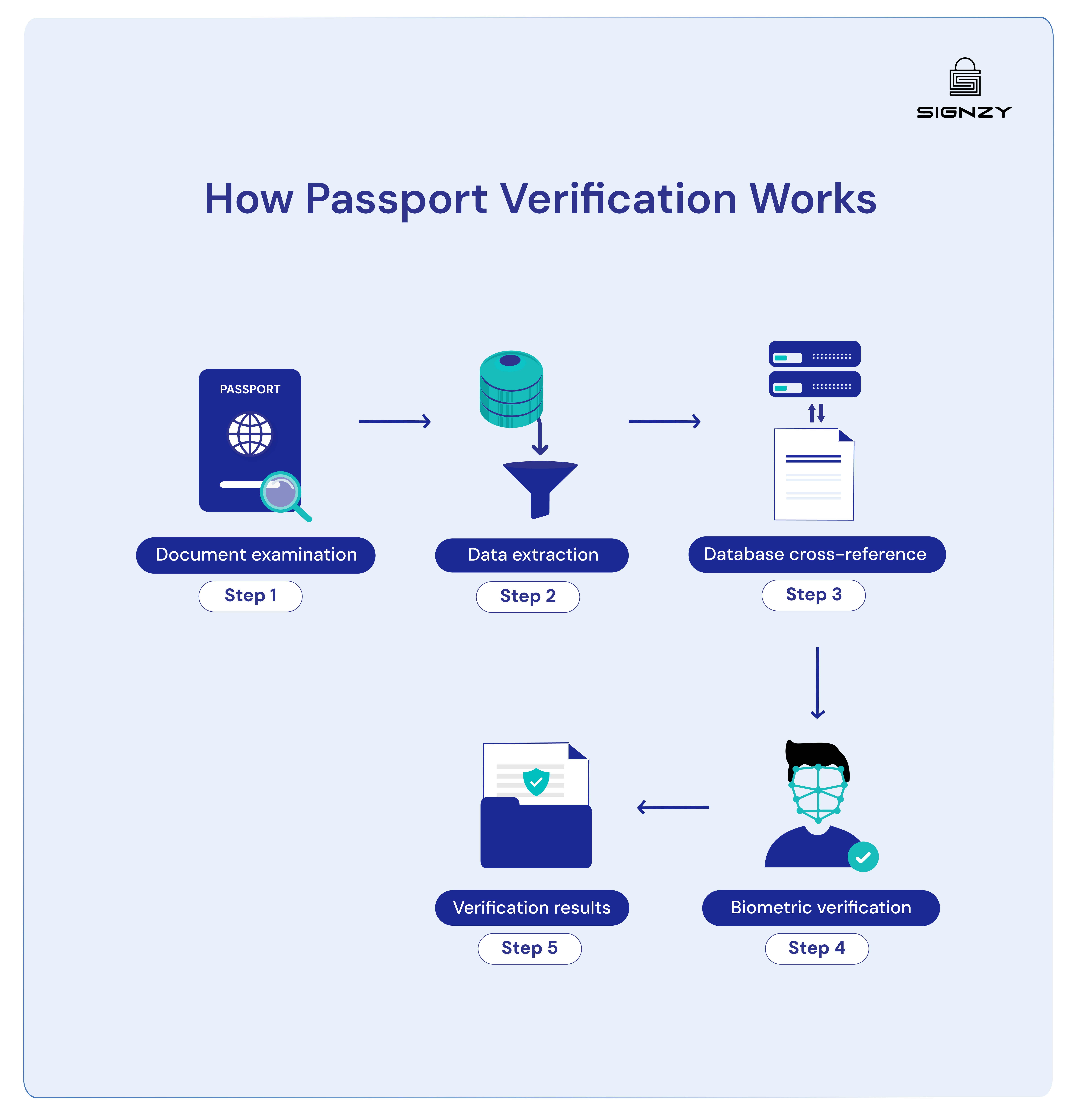How Passport Verification Helps in Identity Verification
In a world where everything is going online, the need for robust identity verification processes has never been greater. One of the most reliable methods for verifying an individual’s identity is through passport verification.
Passports are universally recognized documents that contain vital information about the holder, making them an essential tool for identity verification across various sectors.
Understanding Passport Verification
Passport verification is the process of confirming the authenticity and validity of a passport to ensure that it belongs to the individual presenting it.
This verification involves checking the passport’s physical features, embedded security elements, and the information contained within it against official databases and records.
The goal is to validate that the passport is genuine and that the holder’s identity is accurate.
How Passport Verification Works
The process of passport verification typically involves several key steps:

- Document Examination The first step in passport verification is the physical examination of the document. This includes checking the passport’s security features, such as holograms, watermarks, microprinting, and UV-reactive elements. These features are designed to be difficult to replicate and help ensure the document’s authenticity.
- Data Extraction Next, the information contained in the passport is extracted. This includes the passport number, the holder’s name, date of birth, nationality, and expiry date. Advanced technologies like Optical Character Recognition (OCR) are often used to accurately capture this information from the passport’s machine-readable zone (MRZ).
- Database Cross-Reference The extracted data is then cross-referenced with official databases. These databases include government records, immigration databases, and other trusted sources. This step ensures that the passport details match the records and that the document is not reported as lost or stolen.
- Biometric Verification In some cases, biometric verification is also conducted. This involves comparing the passport holder’s biometric data, such as facial recognition or fingerprints, with the biometric data stored in the passport’s electronic chip. This additional layer of verification enhances security and ensures that the document holder is indeed the person to whom the passport was issued.
- Verification Results After completing the verification steps, the results are provided, indicating whether the passport is valid, expired, or fraudulent. This information helps organizations make informed decisions regarding the individual’s identity.
Benefits of Passport Verification in Identity Verification
Passport verification offers numerous benefits, making it an important component of identity verification processes:
- High Reliability Passports are issued by government authorities and contain multiple security features, making them highly reliable documents for identity verification. The stringent issuance process and built-in security measures significantly reduce the risk of counterfeit documents.
- Global Acceptance Passports are universally recognized and accepted as valid identification documents. This global acceptance makes them ideal for verifying the identities of individuals from different countries and backgrounds.
- Enhanced Security By incorporating advanced security features and biometric data, passports provide a higher level of security compared to other identification documents. This helps prevent identity theft and fraud, ensuring that only genuine individuals are verified.
- Streamlined Processes Passport verification simplifies and streamlines identity verification processes. Automated technologies like OCR and biometric verification reduce the time and effort required for manual checks.
- Compliance with Regulations Using passport verification helps organizations comply with regulatory requirements for identity verification. This is particularly important in sectors like finance, travel, and government services, where strict compliance with identity verification regulations is mandatory.
💡 Related Blog:
Applications of Passport Verification
Passport verification is used in various scenarios to ensure secure and accurate identity verification:
- Travel and Immigration Airports, airlines, and immigration authorities use passport verification to confirm the identities of travelers. This helps in preventing illegal entry, ensuring compliance with visa and immigration requirements, and enhancing border security.
- Financial Services Banks and financial institutions use passport verification for Know Your Customer (KYC) processes. This helps in preventing financial fraud and money laundering, and ensuring compliance with anti-money laundering (AML) regulations.
- Employment Verification Employers use passport verification to confirm the identities of potential employees, especially for roles that require a high level of trust and security. This is crucial for ensuring that the hiring process complies with employment laws and regulations
- Government Services Various government agencies use passport verification to authenticate the identities of individuals applying for services such as social benefits, licenses, and permits. This ensures that only eligible individuals receive these services.
- Healthcare Healthcare providers use passport verification to confirm the identities of patients, particularly in cases where accurate identification is critical for medical records, insurance claims, and accessing healthcare services.
Related Solutions
Implementing Passport Verification
For organizations looking to implement passport verification, the process involves several steps:
- Choose the Right Technology Select the appropriate technologies for passport verification, such as OCR, biometric verification, and database cross-referencing. Ensure that the chosen technologies offer high accuracy and security.
- Integrate Verification Systems Integrate the verification systems with your existing infrastructure. This may involve working with technology providers to ensure seamless integration and functionality.
- Train Staff
Train staff on how to use the passport verification systems effectively. This includes understanding the verification process, recognizing security features, and troubleshooting common issues. - Ensure Data Privacy Ensure that your passport verification process complies with data privacy laws and regulations. Protect the personal data of individuals and implement measures to prevent unauthorized access.
- Continuous Monitoring and Updates Regularly monitor and update your passport verification systems to address new security threats and improve performance.
Conclusion
Passport verification is a powerful tool for identity verification, offering high reliability, global acceptance, and enhanced security. By leveraging advanced technologies and robust verification processes, organizations can ensure that they accurately verify the identities of individuals, preventing fraud and ensuring compliance with regulations.
As technology continues to evolve, the role of passport verification in identity verification will become even more critical, providing a secure and efficient way to confirm the identities of individuals worldwide.
Signzy’s Passport Verification API is available in 180+ countries and helps your business stay globally compliant. With Signzy, you can verify user details within seconds against government databases and seamlessly onboard customers!
Thanks for reading, see you in the next blog 🙂

Shivam Agarwal
Shivam heads the go-to-market strategy at Signzy. He holds the CFA charter and a strong background in financial operations, PE analysis and strategy. His prior roles include business strategy and private-equity analysis in the financial services and fintech domain, giving him deep insight into client needs, risk-adjusted economics and monetisation models for compliance & identity verification platforms.


